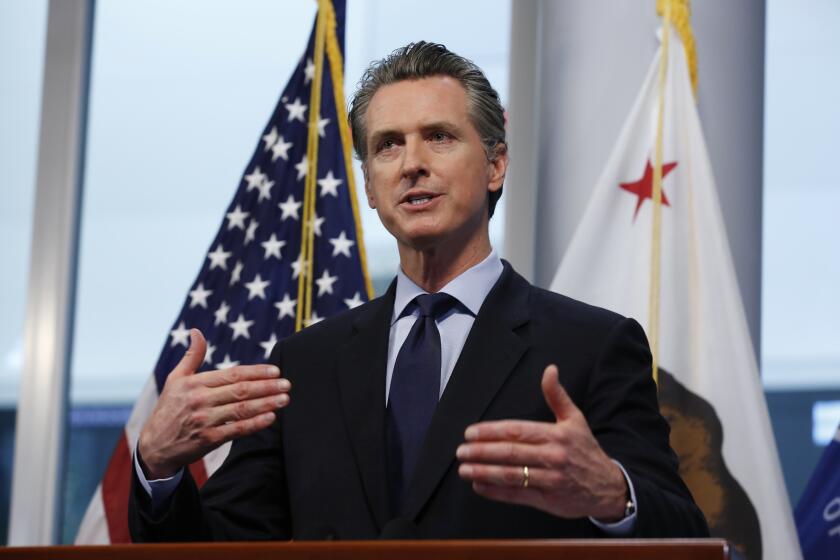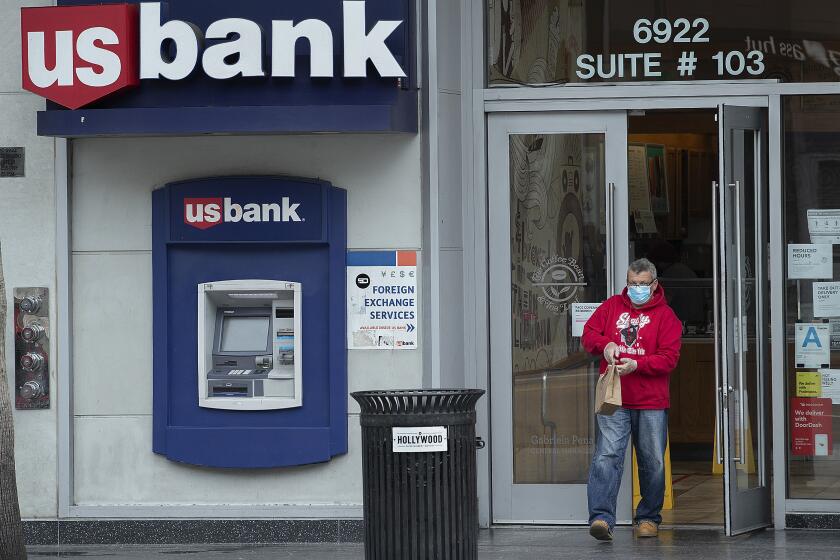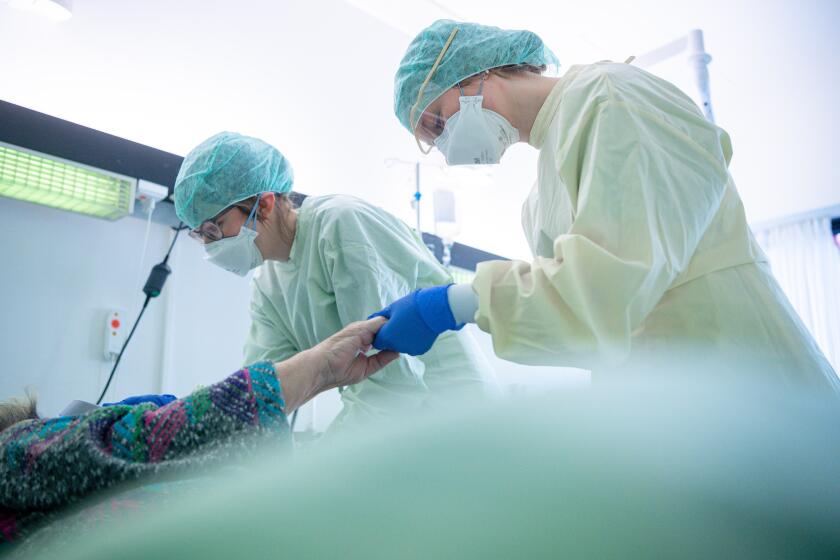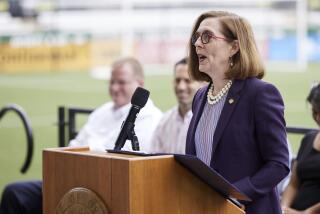Governors band together to decide when to ease coronavirus restrictions
- Share via
On a day when New York surpassed 10,000 deaths from COVID-19, it joined with six nearby states to make plans for easing restrictions and reopening the economy in the near future.
To the west, a similar cooperation was forged between California, Oregon and Washington as governors looked toward moving beyond the early stages of the pandemic.
“You take one step forward, see how it works,” New York Gov. Andrew Cuomo said during a Monday news conference. “Then you measure the next step.”
After the governors’ announcements, President Trump repeated his claim that “the president of the United States calls the shots” on reopening the economy. But the stay-at-home orders affecting much of the country have been issued by state and local leaders, and the authority to lift those orders is theirs.
Nationwide, coronavirus totals rose to more than 580,000 confirmed cases and more than 23,000 deaths, according to Johns Hopkins University. Despite the daunting numbers, officials saw reason for hope as the outbreak appeared to be peaking in numerous hot spots.
Members of Congress are learning how to work from home during the pandemic, but might be called back to Washington to vote.
In New York City, hospital admissions and positive test results have been increasing at markedly slower rates. The three-day average for reported deaths appears to have stabilized in New Orleans, which experienced an early wave of illnesses tied to the crowds attracted by Mardi Gras celebrations.
The U.S. surgeon general tweeted that the pandemic seems to be leveling off in other places, including California, Washington state, New Jersey and the city of Detroit.
“Social distancing and mitigation is working,” Surgeon Gen. Jerome Adams posted. “There is a light at the end of this dark tunnel, so keep at it.”
The alliance among Eastern states — New York, New Jersey, Connecticut, Pennsylvania, Massachusetts, Delaware and Rhode Island — was announced just hours after President Trump tweeted that he has the ultimate authority to ease coronavirus restrictions.
“He left it to the states to close down,” Cuomo said. “Without any guidance, really, he took the position that it was the states’ decision. If it’s your authority to open, why wasn’t it your authority to close?”
The seven states said they need to coordinate because so many of their residents cross state lines for work and shopping. Interstate 95, which connects several of the states’ largest cities, has been called the “COVID corridor.”
“The governors are the ones who have been showing great leadership and taking action to keep our residents safe,” Rhode Island Gov. Gina Raimondo said. “So it’s only appropriate we do the same thing now.”
State economic and public health officials on the working group have set no timeline, though Cuomo said he expected movement within weeks.
In a joint statement, governors on the West Coast said they would continue discussing their “regional pact to recovery” in coming days.
Gavin Newsom said he will work with Oregon and Washington to develop a plan to reopen their economies and heal after the coronavirus restrictions are lifted.
“We issued stay-at-home orders early to keep the public healthy,” Gov. Gavin Newsom posted on social media. “We’ll open our economies with that same guiding principle.”
Amid talk of a next phase, officials acknowledged lingering concerns, particularly when it comes to minority populations.
The state of Arizona issued new data over the weekend that showed a disproportionate risk for Native Americans, particularly members of the Navajo Nation, which extends into New Mexico and Utah.
In metropolitan areas such as Chicago, Philadelphia and Washington, D.C., which reported its first COVID-19 death of a jail inmate, black people have been particularly affected.
LaQuandra Nesbitt, director of the district’s health department, pointed to differences in economic status and healthcare access, saying: “I think we have to have a broader conversation about systemic inequities.”
The latest updates from our reporters in California and around the world
Many officials seemed to agree on another challenge — loosening restrictions for businesses, schools and public transportation will require testing at far greater levels. That could be problematic given the lack of resources.
New York City, in particular, faces a shortage of testing swabs and personal protective equipment.
“It’s still an atmosphere of tremendous scarcity,” Mayor Bill de Blasio said. “I spoke with the president and other key members of the administration … this is the crucial need.”
Conceding that they will need federal help, Cuomo and his fellow governors vowed to proceed cautiously with any changes to stay-at-home orders.
“You’ll start to open the valve … do it carefully, do it slowly,” Cuomo said. “If we do something stupid, you will see those numbers go right back up tomorrow.”
The Associated Press contributed to this story.
Some patients who have recovered from coronavirus infection are suffering lasting damage, including liver damage, heart damage and blood clotting problems.
More to Read
Sign up for Essential California
The most important California stories and recommendations in your inbox every morning.
You may occasionally receive promotional content from the Los Angeles Times.

















